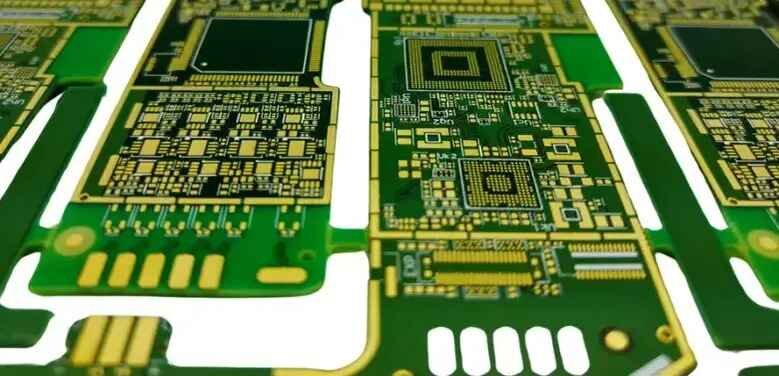Imagine a situation where you receive many complaints about defective PCBs. Then, you arrange for the shipment of the damaged parts and organize numerous meetings to study the issue, fix, and fix the problem. These lengthy and costly fixes could have been avoided if they had been implemented at the initial stages of PCB manufacturing.
Various issues with the products being made are attributed to the weaknesses and gaps in PCB fabrication. Since the introduction of automation, which offers low-cost mass production items available, PCB fabrication manufacturers in China have also increased, so you’ll probably begin with a lengthy list of possible suppliers.
Understanding Your Requirements
If you are choosing a PCB supplier, knowing your requirements is crucial. The main things you should consider include:
PCB components and materials used
Size of PCB
PCB design and its complexity
Quantity of product to be manufactured
PCB design characteristics like Multilayer Boards, high-speed designs or boards that are flexible
If you can clearly define your needs and requirements, you will be able to locate a company that will fulfil your specifications and offer superior PCBAs and PCBs. Many manufacturers have various materials, processes, and choices for components. Therefore, it’s crucial to ensure that the supplier will offer the specific specifications that are required for your design.
Do a thorough investigation.
Spend time researching reliable PCB providers. Remember, even a tiny error in selecting a PCB supplier will result in a disaster. Therefore, look online, take referrals from other people in the industry, visit trade shows and exhibitions, and browse listing platforms/directories to make a list of the best options. Include columns in this list that highlight the companies concerning their experience, quality, affordability, customer reviews, turnaround times, and many other aspects according to your needs. It will help you put the list together in your preferred order and help you choose the most suitable business.
Verify expertise, certificates as well as services
Check the industry a PCB manufacturing firm has worked in and its many decades of knowledge. Examine the certifications, the types of PCBs it has made, the kind of services it offers for manufacturing, and the quantity of the batches it typically works with. Choose to work with a seasoned team rather than playing around with your ideas.
Materials and Component Selection
The first step to ensure high-quality PCB production is deciding on the best material. The type of material used in the base (typically fibreglass or resin) and the copper layer placed on the PCB impact its durability and performance. For example, high-frequency uses such as medical devices and telecommunications need materials that can accommodate high-speed data transmission without compromising signal quality.
Beyond the substrate’s performance, the quality of the components utilized for assembly plays an important role in the item’s performance and final quality. A company that can provide extensive PCBA solutions can assist in selecting the appropriate components to meet the specifications and warrant the quality of the finished product.
Precision in Design and Manufacturing
PCB design is a crucial process to ensure that the product meets the performance requirements. Design flaws, like inadequate trace widths, improper component positioning, or insufficient spacing, can result in problems during the test or use phase. Thus, partnering with a company that understands the complexities of PCB layout is essential.
Modern PCB manufacturing depends heavily on technology and precision. Computerized machines and sophisticated software ensure that every circuit is precisely designed, reducing the possibility of a defect. A PCB maker that invests in cutting-edge technologies will ensure greater uniformity, which results in a higher-quality product.
What Are the Parts of a PCB?
PCB is PCB comprises four main components that include:
Substrate: This material is typically constructed of fibreglass, which imparts a strong core and resistance to breaking. Some consider it the most critical PCB part since it is a kind of framework that offers durability and strength under pressure.
Copper layer: This layer could be made up of copper foil or full copper coating, depending on the type of PCB. Copper serves the same role as the PCB type, transporting electrical signals between and within the PCB. This is because the human nervous system transfers messages between the brain and the body.
Solder mask: The solder mask is a layer of polymer that is the PCB’s skin. It stops the copper from becoming oxidized, prevents the traces from being damaged by accident, and keeps the solder’s path from getting into unsuitable locations, which could cause shorts in the manufacturing process. However, it is important to note that the solder mask isn’t intended to function to create an electrical dielectric.
Silkscreen: Sometimes referred to as the nomenclature or legend, the silkscreen is placed on the board’s component side. It is a source of information for relevant details like parts numbers, symbol switch settings, test points, and component reference numbers.
Conclusion
High-frequency PCB are reliable circuit boards that are used for high-end and middle-tier applications like automotive and military. The production of high-frequency PCBs is highly complicated due to the exact control of the impedance level, circuit etching, plasma procedure copper plating, and the use of thermal shock to test. In addition, the stock of laminate affects the timing of delivery and confidentiality is a concern regarding your project’s properties and your privacy. PCBONLINE is a manufacturer of PCBs. PCBONLINE has experience in considering every aspect of high-frequency PCBs and PCBA projects. PCBONLINE is available to talk to PCBONLINE regarding any query or concern you might be facing.
